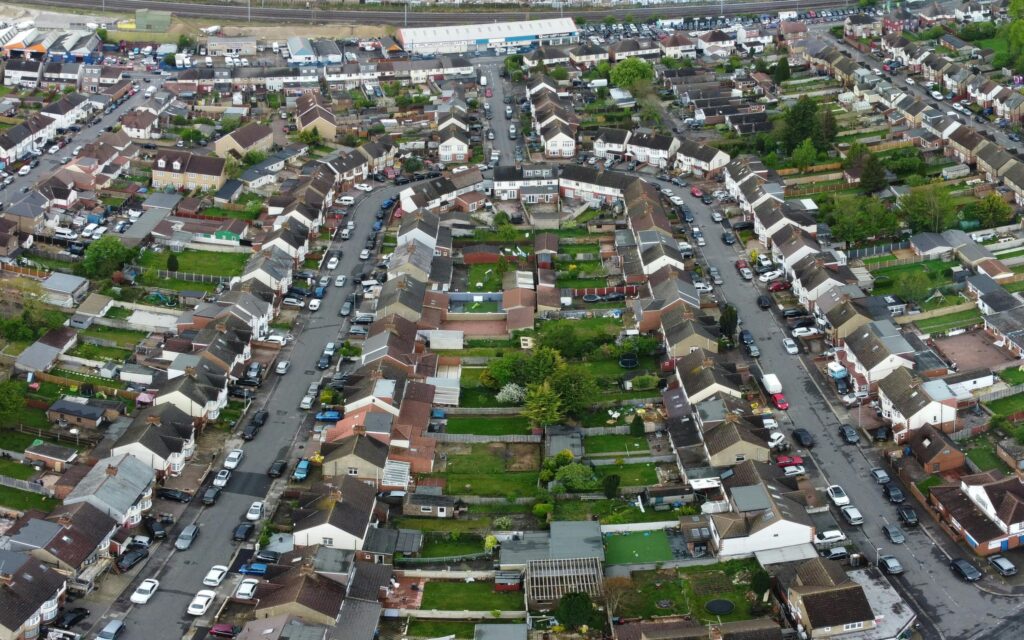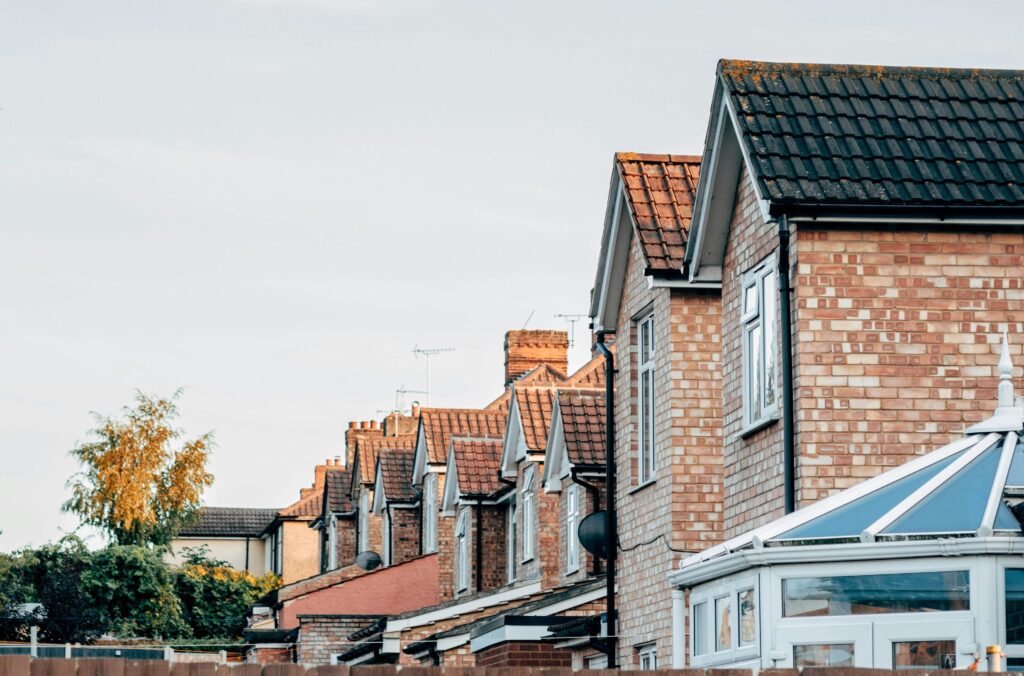When it comes to urban planning, most people are familiar with Green Belt—protected countryside that restricts development to prevent urban sprawl. Others may have heard of Brownfield sites, previously developed land often targeted for regeneration. But what about the Grey Belt?
Grey Belt is an emerging term in the world of planning, referring to land that sits somewhere between Green Belt and Brownfield. These are often underutilised plots—previously developed but not fully built upon, or rural land that lacks the same level of protection as those within the Green Belt. In an era where housing shortages and land scarcity are ongoing challenges, Grey Belt sites present an intriguing opportunity.
This guide will walk you through everything you need to know about Grey Belt land—what it is, how it differs from other land classifications, and why it’s becoming an increasingly important topic. We’ll also explore the planning policies surrounding the Grey Belt, the challenges and opportunities of developing these areas, and what the future housing land supply might hold. If you’re looking for insights into a lesser-known but potentially game-changing category of land, you’re in the right place.
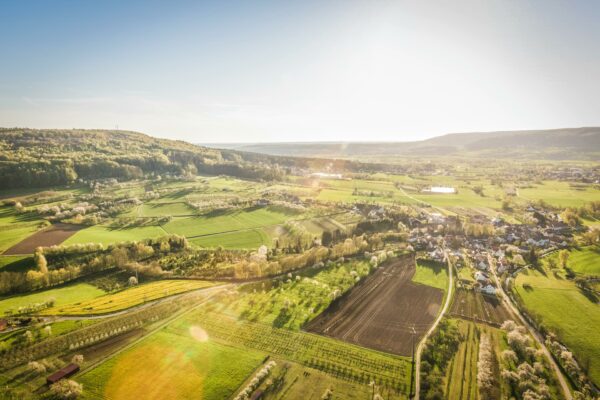
What is the Grey Belt?
You’ve probably heard of the Green Belt —a planning policy designed to protect the countryside from excessive urban sprawl. Introduced in the UK in the mid-20th century, the Green Belt plays a crucial role in maintaining open spaces, prevent neighbouring towns merging, and encouraging development within existing urban areas. However, its strict regulations can make securing planning permission incredibly difficult. If you’re working on a project in the Green Belt, understanding its policies is essential—we’ve covered everything you need to know in our detailed guide here: Green Belt Explained: What It Is and How to Work with It.
But what if a piece of land isn’t quite Green Belt comprising previously, yet not fully urbanised either? That’s where the Grey Belt comes in.
The Grey Belt is not an officially recognised term in most planning policies, but it’s gaining traction as a way to describe land that exists between existing Green Belt and Brownfield sites. These are areas that have been developed to some degree—such as former industrial land, old farm buildings, or even disused greenhouses—but they’re not completely urbanised. In fact, they often still retain character of historic towns and a rural or semi-rural character, though they might not have the same level of protection as Green Belt land.
Think of Grey Belt as a middle ground: it’s not the untouched beauty of Green Belt, nor is it the vacant, redevelopment-ready spaces of Brownfield. Instead, it’s land that may have some level of existing development, or land that is ripe for regeneration, but without the heavy restrictions typically found within the Green Belt areas.
In terms of planning and development, Grey Belt land offers a unique opportunity. It’s often in strategic locations, close enough to urban areas to be useful for housing or commercial development, but still maintains some level of open or semi-rural character. This makes it an increasingly attractive option for planners who need to balance growth and conservation.
However, Grey Belt areas are still subject to their own set of challenges. While they don’t have the same stringent protections as Green Belt, they still have very special circumstances and require careful consideration when it comes to planning permissions. In the following sections, we’ll dive into how Grey Belt land is identified, what planning policies govern its use, and whether it could be the right fit for your next project.
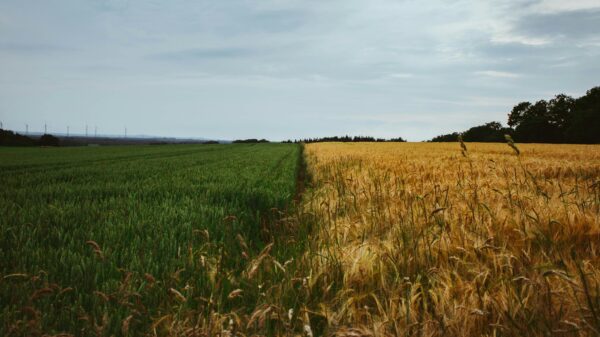
Characteristics of Grey Belt Land
So, what exactly makes Grey Belt land stand out from other types of land? The key characteristics are what set it apart, and understanding them is crucial when considering whether it’s suitable for development. Let’s break it down.
1. Previously Developed or Partially Developed Land
Grey Belt land often includes sites that have already seen some form of development. These might be areas where old buildings once stood, or where industrial activity has left its mark. It’s land that has had a past purpose, but that purpose has either changed or diminished. Think of disused factories, abandoned warehouses, or even former agricultural buildings. While not fully urbanised, these sites still have traces of human use.
The beauty of previously developed land is that it can be easier to develop than untouched Green Belt areas, as some of the groundwork—like infrastructure or access roads—might already be in place. That means a bit less red tape to cut through, but it’s still important to understand the specific planning policies for each site.
2. Agricultural Land, Recreational Areas, or Gardens
Grey Belt land can also include agricultural areas, recreational spaces, or even private gardens. These spaces may be underutilised or not being used to their full potential, which opens up opportunities for new uses. For example, a large plot of agricultural land might be a perfect candidate for low-density housing, especially if it’s near an urban area. Or perhaps a public park or garden could be reimagined as a community space or housing development—depending on the local needs and planning considerations.
One of the defining features of these areas is that they may not have been developed to their highest potential, which is why they sit in the “grey” space between Green Belt and Brownfield. They still have value as green spaces car parks and recreational areas, but it’s worth exploring whether there’s a way to balance that with the growing demand for urban development.
3. Low Biodiversity, Underused or Unused Areas
Another important characteristic of many Grey Belt lands is that they might have low biodiversity or be areas that are underused or unused. These sites might not offer the same ecological value as Green Belt areas, which are often rich in wildlife and natural habitats. Instead, Grey Belt land might be marginal, meaning it’s less ecologically important and hasn’t been actively used or maintained.
While these areas may not be as valuable for conservation purposes, it’s still essential to consider their potential environmental impacts. Sustainable development is always the goal, even when working with land that’s not ecologically rich. Grey Belt can often offer a compromise between development and environmental preservation—with careful planning, these areas can be redeveloped while maintaining a balance with nature.
In summary, Grey Belt land is typically, comprising previously developed land, underutilised, and often has a low environmental impact. While it may not be as protected as Green Belt land, it can offer a unique opportunity for development that doesn’t come with the same constraints as fully urbanised areas. As you explore the possibilities of Grey Belt land for residential development, keep these key characteristics in mind to better understand what can be achieved.
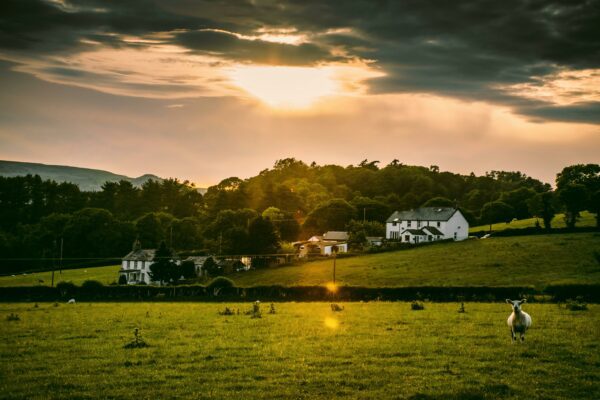
Grey Belt’s Place in Planning Policies
When it comes to planning policies, Grey Belt is defined but doesn’t have a clearly defined place in official documents—yet. Unlike Green Belt, which is firmly entrenched in planning law with its own set of rules, Grey Belt falls into more of a grey area (no pun intended!). But that doesn’t mean it’s ignored in the planning process.
In England, planning decisions are primarily shaped by the National Planning Policy Framework (NPPF), which is regularly updated to balance population growth, environmental sustainability, and economic development. Although the term Grey Belt is not explicitly mentioned, the NPPF sets out fundamental principles that impact how such land is assessed and managed. Let’s take a closer look at its role within this framework.
National Planning Policy Framework (NPPF) Updates and Grey Belt
The NPPF encourages the efficient use of land, especially as the demand for housing grows. As part of this, it supports the redevelopment of previously developed land, which Grey Belt often comprises. Under the NPPF, there’s a presumption in favor of sustainable development, meaning areas of urban land that that have already been impacted by development—like Grey Belt—are often seen as more suitable for growth than untouched Green Belt land.
The most recent updates to the NPPF have been focused on making it easier to build in locations where land is available but underutilised. This is where Grey Belt plays an important role. Since it’s often made up of land that has already been developed or is used minimally, it is seen as a potential resource for regeneration—without the heavy constraints of Green Belt protection.
The Challenge of Defining Grey Belt
One of the biggest challenges when it comes to planning for Grey Belt land is that it doesn’t have a formal, clear-cut grey belt definition in national planning policies. Unlike Green Belt policy, which has well-established guidelines and protections, the term Grey Belt is more of a concept than an official category. This lack of clarity leaves a lot of room for interpretation, and this can make planning for these areas tricky.
Since Grey Belt isn’t officially recognised in planning law, how it’s treated can vary from one local authority to another. Each council might have a different approach based on their regional priorities, the type of land in question, and the surrounding environment. For example, one council might see a plot of land as ideal for housing—it might be underused agricultural land or a disused industrial site—and decide it’s suitable for development. Meanwhile, another council, considering the same type of land, might prioritise conservation or agricultural use instead.
This variation happens because there are no uniform rules about what qualifies as Grey Belt, or what kind of development should be allowed. It really depends on the local context—including things like community needs, environmental concerns, and long-term planning strategies. The lack of a standard grey belt definition also means that each council has a degree of flexibility in deciding how to use these lands, which can lead to different interpretations of what’s best for the land and the community.
In short, the definitional grey area surrounding Grey Belt land makes it a challenging and sometimes inconsistent subject in planning discussions. Without a uniform understanding of what it is or how it should be treated, each local authority must carefully consider how to manage these areas in line with their own planning goals and the broader vision for sustainable growth.
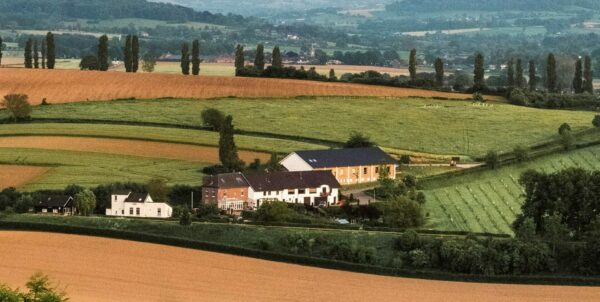
Developing Grey Belt Land
Developing Grey Belt land can present both exciting opportunities and a few challenges. These areas often sit in a sweet spot between Green Belt and fully urbanised land, making them prime candidates for regeneration projects. Let’s explore the advantages and disadvantages, the planning permissions, and the sustainability and environmental considerations that come with developing these spaces.
Advantages of Developing Grey Belt Land
One of the biggest advantages of developing Grey Belt land is that it offers untapped potential for growth. Since much of this land has already been impacted by previous development, it provides a flexible foundation for new projects. Whether it’s a housing development, business park, or even a community space, Grey Belt land can accommodate a variety of uses without the stringent restrictions applied to Green Belt land.
Because Grey Belt areas are often close to existing urban areas, they benefit from easier access to infrastructure such as roads, public transport, and utilities. This makes development more cost-effective and logistically simpler than starting a project on land that is farther from established services. Plus, developers can reuse or repurpose existing buildings, minimising waste and taking advantage of the ‘brownfield regeneration’ approach.
Disadvantages of Developing Grey Belt Land
While there’s a lot of promise in Grey Belt land, it doesn’t come without its challenges. For one, although it’s less protected than land within the Green Belt, it’s still subject to planning policies that ensure development is carried out responsibly. Local authorities may still impose restrictions to protect the character of the surrounding area or to prevent too much congestion.
Another consideration is that Grey Belt land can sometimes have environmental drawbacks. It’s often degraded land or land that has been neglected, so developers may encounter issues like pollution, poor soil quality, or unforeseen contamination. These environmental challenges can complicate the development process and add to the costs. Plus, any change in land use can have unintended effects on local ecosystems.
Planning Permissions and Processes
Just because Grey Belt land isn’t as heavily protected as Green Belt land designated the site doesn’t mean development is a free-for-all. Planning permission is still required, and the process can vary depending on the specific location and type of development. Local councils will likely consider factors like the site’s impact on the community, existing infrastructure, and whether the development aligns with regional plans for growth.
Developers may also need to submit detailed environmental assessments, especially if the land is near sensitive areas. The planning process for some potential Grey Belt sites can be more flexible than for Green Belt site, but it’s still a structured process that requires careful planning and community involvement. It’s important to keep in mind that planning conditions may be placed on the development to ensure it meets both environmental and social sustainability standards.
Sustainability and Environmental Impacts
When considering the development of Grey Belt land, it’s essential to think about sustainability. Regeneration projects on these sites can have a positive environmental impact if approached thoughtfully. For example, reusing existing structures can reduce the demand for new materials and help prevent urban sprawl, which aligns with the principle of sustainable development.
However, not all Grey Belt sites are free from environmental concerns. Some may have been impacted by pollution from previous industrial use or might be located in areas with high biodiversity that could be affected by development. That’s why careful environmental assessments are vital before embarking on any projects. Developers should aim to minimise their carbon footprint, preserve any natural resources, and consider green infrastructure (such as green roofs, rainwater harvesting, and wildlife corridors) to ensure the development remains sustainable.
In conclusion, developing Grey Belt land offers a lot of promise—particularly as a way to meet housing and business demands in urbanising areas. However, careful consideration must be given to environmental impacts, planning permissions, and the long-term sustainability of any development. With the right balance, these areas can contribute to urban regeneration, providing more space for people to live, work, and thrive, without putting too much strain on our precious natural environments.

The Future of the Grey Belt
As urban areas expand and housing demand continues to rise, Grey Belt is becoming an increasingly important part of the conversation. While it currently exists in a somewhat undefined space within planning policies, future changes could see grey belt opportunities shape its role in urban development and sustainability efforts.
With increasing government pressure to meet housing targets, it’s likely that some Grey Belt areas will be reclassified to encourage development, particularly those that are underutilised or previously developed. Local plans may begin to integrate Grey Belt into urban expansion strategies, ensuring it contributes to sustainable growth rather than unchecked sprawl.
Looking ahead, the future of Grey Belt will likely be shaped by evolving planning policies, community engagement, and sustainable development strategies. If managed correctly, these areas could serve as key development zones, offering much-needed affordable housing, and local or national infrastructure while avoiding the more controversial issues that come with building on Green Belt land.
Ultimately, the challenge will be to find a balance—allowing for practical growth without compromising community well-being or environmental integrity. As policies evolve, Grey Belt may shift from a planning grey area into a well-defined and strategic part of the built environment—helping cities grow in a way that is smarter, greener, and more sustainable.
Importance of Working With Professionals
Successfully developing Grey Belt requires a well-planned approach. With changing policies, varying local council perspectives, and sustainability factors to consider, early informed decisions can help avoid setbacks, minimise risks, and improve the likelihood of approval. This is where professional expertise makes all the difference.
At Homz, we offer Pre-Planning Advice to help you understand the potential of your site, assess planning constraints, and explore the best routes for development. Whether you’re looking to redevelop underutilised land or need clarity on planning policies, our team provides tailored advice to set you on the right path. Find out more about our Pre-Planning Advice service here.
With our expert knowledge in planning policies and land development, we make the process clearer and more manageable. We help clients navigate planning applications, site assessments, and policy considerations, ensuring every project has the best chance of success.
If you’re considering a project on Grey Belt, we’re here to help you make informed decisions and maximise your site’s potential. Get in touch with us today.

Grey Belt FAQ: Everything You Need to Know
1. What is Grey Belt?
Grey Belt refers to land that sits between urban and rural classifications, often underutilized, partially developed, or previously built on. While it doesn’t have the strict protections of Green Belt land, it’s also not as straightforward to develop as Brownfield sites. This middle ground creates both opportunities and challenges for development.
2. How is Grey Belt different from Green Belt and Brownfield land?
- Green Belt: Land protected to prevent urban sprawl. Development is highly restricted.
- Brownfield: Previously developed land that is now available for redevelopment, often prioritized for housing and regeneration.
- Grey Belt: A mix of belt comprising previously developed and underused land, which could be suitable for development but lacks a formal planning designation.
3. Can I build on Grey Belt?
Possibly—but planning approval isn’t guaranteed. Since Grey Belt is not officially defined in national policies, local councils take different approaches to its development. Some may see it as an opportunity for housing, while others may impose restrictions based on environmental or local factors.
4. How do I know if my land is considered Grey Belt?
Unlike Green Belt site, there’s no official Grey Belt map. However, land with the following characteristics might fall into this category:
–Previously developed but not fully utilised
–Located near existing settlements
–Not protected under strict conservation policies
-Has limited ecological or agricultural value
If you’re unsure, a planning expert can help assess your site’s potential. Contact Us for more information.
5. Does Grey Belt have specific planning policies?
No, there are no national policies specifically defining Grey Belt. However, planning decisions for these areas often depend on local authority interpretations, existing land use, and sustainability considerations. The National Planning Policy Framework (NPPF) might guide decisions on grey belt policies, but each case is unique.
6. Can Grey Belt become Green Belt or Brownfield?
Yes, Grey Belt sites can sometimes be reclassified through planning reviews. Some may gain Green Belt status, offering them greater protection for green belt purposes, while others might be designated as Brownfield land, making them suitable for redevelopment. Staying informed about local planning policies is essential to understand how these areas might evolve.
7. How might future planning policies impact Grey Belt development?
With growing pressure to balance housing crisis and environmental protection, future policies may provide clearer guidelines on Grey Belt. Some areas might gain greater protection, while others could be prioritised for development to address housing shortages. Keeping up with policy changes is key for anyone considering a Grey Belt project. However, Grey Belt excludes land that is already designated as Green Belt or other protected areas. Staying informed about local planning policies is essential to understand how these areas might evolve.

